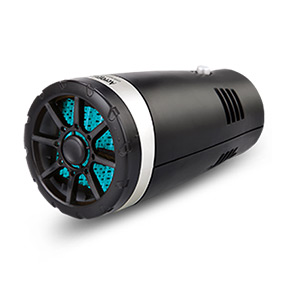Rear Handbrake Cable Installation and Maintenance Tips for Optimal Performance and Safety
Understanding the Importance of the Rear Handbrake Cable
The rear handbrake cable, often referred to as the parking brake cable, is a crucial component of a vehicle's braking system. It connects the handbrake lever to the brake mechanism at the rear wheels, enabling drivers to secure their vehicles when parked. This article delves into the significance of the rear handbrake cable, how it operates, common issues that may arise, and maintenance tips to ensure its longevity.
Functionality of the Rear Handbrake Cable
The rear handbrake cable operates as a mechanical linkage between the handbrake lever, typically located between the front seats, and the rear brake assembly. When a driver pulls the handbrake lever, it tightens the cable, which in turn engages the brake shoes or pads at the rear wheels. This action locks the wheels and prevents the vehicle from rolling, thereby providing a sense of security when parked on an incline or in any situation requiring the vehicle to remain stationary.
Common Issues with the Rear Handbrake Cable
1. Wear and Tear Over time, the rear handbrake cable can experience wear due to friction and exposure to environmental elements. This degradation can result in reduced effectiveness of the parking brake, making it less reliable.
2. Corrosion The cable can be susceptible to rust and corrosion, particularly in regions where roads are salted during winter. This corrosion can lead to fraying or breaking of the cable strands.
3. Cable Slack If the cable stretches or if the adjustment is incorrect, it can become slack. This slackness may prevent the handbrake from engaging fully, increasing the risk of the vehicle rolling away unintentionally.
4. Binding or Seizing Sometimes the cable can bind in its housing or seize due to rust. This binding can prevent the cable from pulling effectively, leading to a situation where the handbrake cannot be applied or released smoothly.
rear handbrake cable

Maintaining Your Rear Handbrake Cable
Regular maintenance of the rear handbrake cable is essential to ensure its optimal performance and longevity. Here are a few tips
1. Routine Inspections Periodically inspect the handbrake cable for any visible signs of wear, fraying, or corrosion. Look closely at the cable housing and junctions where the cable connects to the brake system.
2. Ensure Proper Adjustment Make sure that the handbrake is appropriately adjusted to engage securely. An adjustment can usually be made at the handbrake lever or at the rear brakes, depending on the vehicle model.
3. Keep It Clean Keep the cable free from dirt and debris. Cleaning the cable and its housing can prevent premature wear and corrosion.
4. Lubrication Applying a suitable lubricant to the cable can help it to operate more smoothly and reduce the chances of binding. However, care should be taken not to overdo it, as excessive lubricant may attract dirt.
5. Professional Servicing If you notice any issues or if the handbrake feels weak, it is wise to consult with a professional mechanic. They have the expertise to diagnose issues accurately and implement necessary repairs or replacements.
Conclusion
The rear handbrake cable is more than just a simple component; it plays a vital role in vehicle safety and functionality. Understanding its workings and being proactive about maintenance can help ensure that your vehicle remains secure when parked. If you encounter any issues with your handbrake, do not hesitate to address them promptly. After all, a reliable parking brake is essential for peace of mind, whether you're on a hill or simply parked in your driveway.
-
Workings of Clutch Pipe and Hose SystemsNewsJun.04,2025
-
The Inner Workings of Hand Brake Cable SystemsNewsJun.04,2025
-
The Secrets of Throttle and Accelerator CablesNewsJun.04,2025
-
The Hidden Lifeline of Your Transmission Gear Shift CablesNewsJun.04,2025
-
Demystifying Gear Cables and Shift LinkagesNewsJun.04,2025
-
Decoding Clutch Line Systems A Comprehensive GuideNewsJun.04,2025
